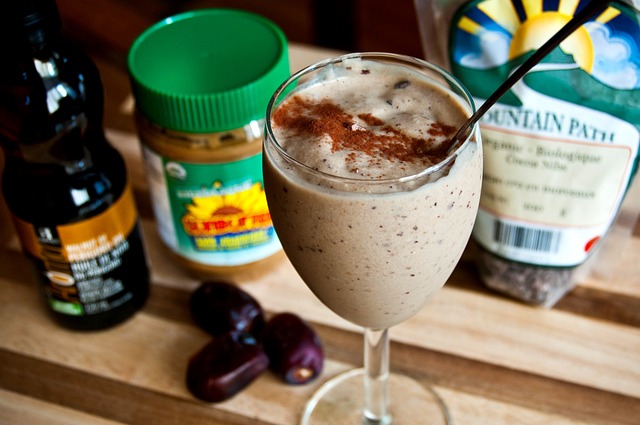 The other day I was asking my son what health topic I could write about that would be relevant to him. He suggested an article about protein powders since he does a protein smoothie every day. He wanted to know the best ones and the ones he should avoid. We got sidetracked for a moment when he mentioned that he put a big bunch of spinach into his smoothies. I casually mentioned that several people have died from using too much spinach in their morning smoothies. This shocked him so I had to explain how spinach has a lot of oxalic acid in it which can be dangerous in large quantities. Oxalic acid binds to the minerals in your food and keeps you from absorbing them. This is not much of an issue occasionally, but if you are doing spinach smoothies daily for a cleanse, the effect can build up and create sometimes serious issues. So my advice to him was moderation in all things.
The other day I was asking my son what health topic I could write about that would be relevant to him. He suggested an article about protein powders since he does a protein smoothie every day. He wanted to know the best ones and the ones he should avoid. We got sidetracked for a moment when he mentioned that he put a big bunch of spinach into his smoothies. I casually mentioned that several people have died from using too much spinach in their morning smoothies. This shocked him so I had to explain how spinach has a lot of oxalic acid in it which can be dangerous in large quantities. Oxalic acid binds to the minerals in your food and keeps you from absorbing them. This is not much of an issue occasionally, but if you are doing spinach smoothies daily for a cleanse, the effect can build up and create sometimes serious issues. So my advice to him was moderation in all things.
 The conversation moved on to what protein powders are good and which ones are not so good. Here the idea of good and bad does not really fit. Each protein source has its strong points and its weak points. The question really is — what are your goals and why are you using a protein powder? There are lots of good reasons for using protein powders as a regular part of your diet. If you are getting on in years (50+) then your ability to digest and absorb protein from your diet is getting less each year. If you suffer from GERD, or you take medication that suppresses your stomach acid, you have the same problem. Without stomach acid, you can’t really digest your dietary proteins. If you have dietary restrictions for health reasons (such as kidney issues) or you avoid animal sources of protein, then you also need extra daily protein. Frequently, these days I find so many folks have food sensitivities that restrict their diet and these are almost always to the proteins in the foods they are sensitive to.
The conversation moved on to what protein powders are good and which ones are not so good. Here the idea of good and bad does not really fit. Each protein source has its strong points and its weak points. The question really is — what are your goals and why are you using a protein powder? There are lots of good reasons for using protein powders as a regular part of your diet. If you are getting on in years (50+) then your ability to digest and absorb protein from your diet is getting less each year. If you suffer from GERD, or you take medication that suppresses your stomach acid, you have the same problem. Without stomach acid, you can’t really digest your dietary proteins. If you have dietary restrictions for health reasons (such as kidney issues) or you avoid animal sources of protein, then you also need extra daily protein. Frequently, these days I find so many folks have food sensitivities that restrict their diet and these are almost always to the proteins in the foods they are sensitive to.
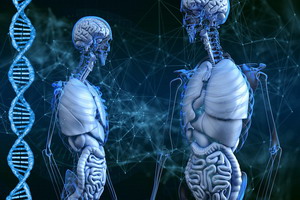 Why use a protein powder? We are made of protein, water, a few chemicals, and these days a good amount of extra fat. Structurally we are all about protein. It forms our skin, digestive tract, bones, muscles, blood, organs, literally everything. You have to get enough of the right kind of protein or else you die. Since getting healthy food is getting harder and harder, supplementing with a good quality source of protein is just smart. If you eat plenty of free-range beef, mutton, swine, and fowl, you are fine – no protein powder is needed. If not, then well… check your skin. Are you getting wrinkles? Is your skin getting thinner? Are your muscles as strong as they were 20 years ago? These are all signs of needing more protein, probably.
Why use a protein powder? We are made of protein, water, a few chemicals, and these days a good amount of extra fat. Structurally we are all about protein. It forms our skin, digestive tract, bones, muscles, blood, organs, literally everything. You have to get enough of the right kind of protein or else you die. Since getting healthy food is getting harder and harder, supplementing with a good quality source of protein is just smart. If you eat plenty of free-range beef, mutton, swine, and fowl, you are fine – no protein powder is needed. If not, then well… check your skin. Are you getting wrinkles? Is your skin getting thinner? Are your muscles as strong as they were 20 years ago? These are all signs of needing more protein, probably.
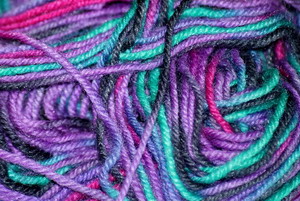 Let’s get a few basics down first. Proteins are long chains of tiny amino acids. If a protein were enlarged to the size of your cell phone, it would look like a huge tangle of yarn. A protein can have thousands of amino acids in it or it may just have a few. The specific shape of that tangle makes that protein sometimes act like a tool and other times like a big complex building block. The plant or animal that we are eating for protein use these tools and blocks for their own purposes. We can’t really use them for ourselves, so we have to break the proteins down into their tiny amino acid pieces during digestion, absorb the aminos into our bloodstream, and move the amino pieces to where we can build the human protein tools and blocks we need. If incompletely broken down proteins get into our bloodstream from leaky gut or infection, we have an immune system that attacks the non-human proteins and destroys them.
Let’s get a few basics down first. Proteins are long chains of tiny amino acids. If a protein were enlarged to the size of your cell phone, it would look like a huge tangle of yarn. A protein can have thousands of amino acids in it or it may just have a few. The specific shape of that tangle makes that protein sometimes act like a tool and other times like a big complex building block. The plant or animal that we are eating for protein use these tools and blocks for their own purposes. We can’t really use them for ourselves, so we have to break the proteins down into their tiny amino acid pieces during digestion, absorb the aminos into our bloodstream, and move the amino pieces to where we can build the human protein tools and blocks we need. If incompletely broken down proteins get into our bloodstream from leaky gut or infection, we have an immune system that attacks the non-human proteins and destroys them.
 There are 20 different amino acids that we use to make our human protein tools and blocks. This is where the basic difference between various protein powders begins. Our body can manufacture five types of these amino acids easily and six in limited quantities. There are nine essential amino acids that must come from food sources. Animal sources of protein generally have all 20 different amino acids in them. Plants, however, are frequently missing one or more of the essential amino acids in their protein structures. If you are stuck depending on just one plant source for your protein, you will probably get sick. Fortunately, different plants have different amino acid shortages, so eating a variety of protein-containing plants will usually cover these deficiencies. So, let’s cover a sampling of different protein powders.
There are 20 different amino acids that we use to make our human protein tools and blocks. This is where the basic difference between various protein powders begins. Our body can manufacture five types of these amino acids easily and six in limited quantities. There are nine essential amino acids that must come from food sources. Animal sources of protein generally have all 20 different amino acids in them. Plants, however, are frequently missing one or more of the essential amino acids in their protein structures. If you are stuck depending on just one plant source for your protein, you will probably get sick. Fortunately, different plants have different amino acid shortages, so eating a variety of protein-containing plants will usually cover these deficiencies. So, let’s cover a sampling of different protein powders.
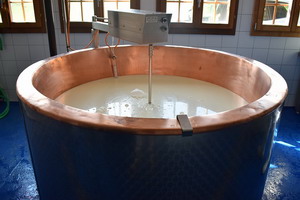 The first thing you will likely encounter when shopping for a protein powder is deciding what kind of processing you want your powder to have undergone. The choices I am aware of are protein concentrates vs. isolates vs. hydrolysates. You might also find ferments for a few plant proteins.
The first thing you will likely encounter when shopping for a protein powder is deciding what kind of processing you want your powder to have undergone. The choices I am aware of are protein concentrates vs. isolates vs. hydrolysates. You might also find ferments for a few plant proteins.
Concentrates: This is just what it sounds like. They remove the water and stuff that will wash away with water. The final product is around 60 to 80% protein with the rest being carbs and fats.
Isolates: Here they take a concentrate and do further filtering and processing to get rid of much of the fat and carbs – about 90-95% protein.
Hydrolysates: This is where they take an isolate and treat it with enzymes to break apart the protein into smaller pieces that are easier to absorb.
Ferments: With ferments, generally whole plant protein sources are fermented with specific bacteria that help break down the protein. Turning soybeans into tempeh, natto, or miso are examples of this.
 Okay, let’s go over some of the common protein powders and what benefits they are best at providing. The primary concern with protein powders is how fast they digest and absorb and how complete the amino acid levels are. The fastest absorbing proteins are whey, collagen, and pea protein (15 minutes to 2 hours). Egg white, soy, hemp, and brown rice protein are medium (2 to 4 hours), and the slowest protein is casein protein (over 4 hours). If you are working out or weight training, you typically want a fast protein drink immediately after your workout to support muscle recovery. Medium-speed proteins are good for keeping you from being hungry between meals, which is good if you are dieting. And slow proteins like casein do the best total job of building muscle mass.
Okay, let’s go over some of the common protein powders and what benefits they are best at providing. The primary concern with protein powders is how fast they digest and absorb and how complete the amino acid levels are. The fastest absorbing proteins are whey, collagen, and pea protein (15 minutes to 2 hours). Egg white, soy, hemp, and brown rice protein are medium (2 to 4 hours), and the slowest protein is casein protein (over 4 hours). If you are working out or weight training, you typically want a fast protein drink immediately after your workout to support muscle recovery. Medium-speed proteins are good for keeping you from being hungry between meals, which is good if you are dieting. And slow proteins like casein do the best total job of building muscle mass.
Whey protein: The fastest absorbed protein is most commonly used by athletes during or immediately after a workout. It is a complete protein.
Collagen: Typically derived from beef hides, chicken joints, fish, and eggshell membranes. Collagen peptides are hydrolysates that allow absorption. They are useful in promoting skin thickness and elasticity, joint function, and bone, and tissue health. It is low in the amino acids that promote muscle growth.
Egg white: Egg white powder is the most perfect protein source. The balance of amino acids most closely resembles what we need to form healthy tissue, better even than beef. However, some people are allergic to eggs.
Pea protein: This is quickly absorbed, but it is deficient in the essential amino acid methionine, so take it with hemp protein which has enough methionine.
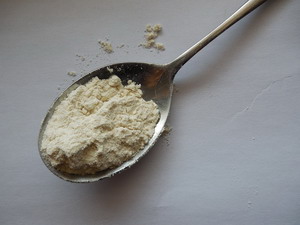 Soy protein: This is very high in protein, but it contains an inhibitor of our digestive enzyme trypsin, so it is hard to digest. Also, soy contains estrogen-like chemicals that can disrupt our natural hormones. Fermentation helps with these problems.
Soy protein: This is very high in protein, but it contains an inhibitor of our digestive enzyme trypsin, so it is hard to digest. Also, soy contains estrogen-like chemicals that can disrupt our natural hormones. Fermentation helps with these problems.
Hemp protein: I believe this is probably the best plant protein all around, but it is low in lysine and leucine, so you need protein from legumes and seeds with it.
Brown rice protein: This is an average protein source and like most grains it is low in lysine, so eat legumes, seeds, and nuts to complement it.
Casein protein: Basically we are talking about cheese powder here. It is slowly absorbed and has the strongest muscle-building effect. This is best used late in the day for its muscle-building effects while you sleep.
 These are the most common protein powders I see in the stores. A little bit more of the basics. Like I told my son in the beginning, moderation in all things. More protein is not necessarily better. Your body can only absorb about 10 grams of protein per hour. So slamming down 60 grams in a super smoothie before you head off to the gym is a waste and will actually create protein toxicity in your gut. Around 80% of the protein you do absorb goes to the liver and is converted into sugar through a process called gluconeogenesis. This is part of the reason why we need so much protein. Only a small amount of what we are able to eat and digest actually ever gets used as protein. Which protein is best for you will take some trial and error. Food sensitivities are everywhere, so a protein that sounds really good may not work for you at all. Each person’s digestive capacity is different. Protein needs good strong stomach acid and good strong digestive enzymes to get broken down into the amino acids that we can absorb. As folks get older these get weaker. For them (and myself) I recommend HCl tablets and enzyme tablets with any meal that contains protein, and that includes that protein smoothie. One way around this is to use free-form amino acids that need no digesting, almost as good as the protein hydrolysates that are partially broken down for you.
These are the most common protein powders I see in the stores. A little bit more of the basics. Like I told my son in the beginning, moderation in all things. More protein is not necessarily better. Your body can only absorb about 10 grams of protein per hour. So slamming down 60 grams in a super smoothie before you head off to the gym is a waste and will actually create protein toxicity in your gut. Around 80% of the protein you do absorb goes to the liver and is converted into sugar through a process called gluconeogenesis. This is part of the reason why we need so much protein. Only a small amount of what we are able to eat and digest actually ever gets used as protein. Which protein is best for you will take some trial and error. Food sensitivities are everywhere, so a protein that sounds really good may not work for you at all. Each person’s digestive capacity is different. Protein needs good strong stomach acid and good strong digestive enzymes to get broken down into the amino acids that we can absorb. As folks get older these get weaker. For them (and myself) I recommend HCl tablets and enzyme tablets with any meal that contains protein, and that includes that protein smoothie. One way around this is to use free-form amino acids that need no digesting, almost as good as the protein hydrolysates that are partially broken down for you.
 As you might guess, I recommend mixing it up with a variety of protein powders. I see protein powder as an easy way to enhance your diet and cover your bases. When you are young and have a great digestive capacity, this is not a concern. When you enter the 50+ range then enhancement is a good thing. If you live on an organic farm and raise your own fruit, vegetables, chickens, and sheep — like my brother — then you can get all you need from your backyard. But for the rest of us that live busy suburban lives, a little extra support is useful.
As you might guess, I recommend mixing it up with a variety of protein powders. I see protein powder as an easy way to enhance your diet and cover your bases. When you are young and have a great digestive capacity, this is not a concern. When you enter the 50+ range then enhancement is a good thing. If you live on an organic farm and raise your own fruit, vegetables, chickens, and sheep — like my brother — then you can get all you need from your backyard. But for the rest of us that live busy suburban lives, a little extra support is useful.
Take care,
David
